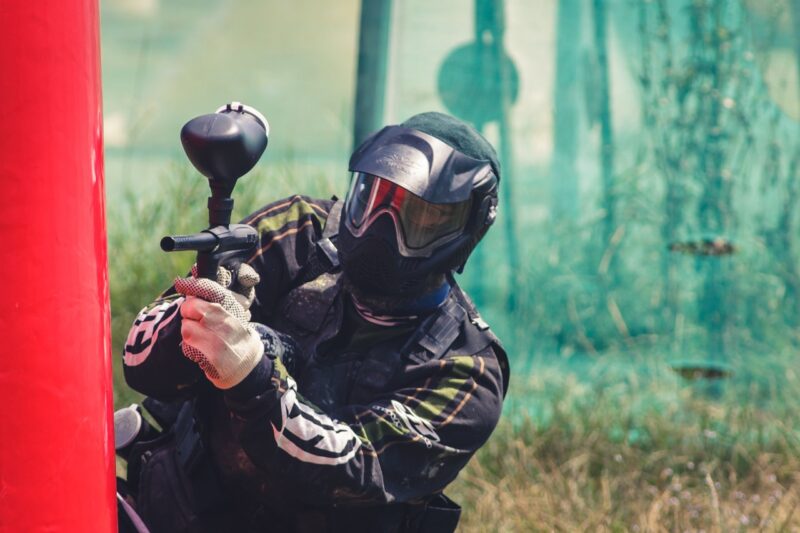Exploring the World of Paintball and How It Relates to Real Combat Training
November 11, 2024

Paintball is often seen as a thrilling recreational activity, but beneath its vibrant colors and adrenaline-pumping action lies a deeper connection to tactical combat training used by military and law enforcement personnel. By understanding the similarities and differences between paintball and actual combat training, enthusiasts can not only enjoy this sport but also appreciate its applications in real-world scenarios.
1. The Origins of Paintball
The game of paintball emerged in the 1980s as a novel way for individuals to engage in competitive shooting. The first paintball games were played by enthusiasts who used the markers designed for marking trees and livestock. Over the years, paintball evolved into a structured sport with various formats, rules, and dedicated fields.
Today, paintball is enjoyed worldwide, attracting players interested in strategy, competition, and the thrill of action. But is it more than just a game? Let’s explore how it connects to real-world combat training techniques.
2. Tactical Movements and Strategy
In paintball, players must develop tactical movements to outsmart and outmaneuver their opponents. Key strategies include:
- Cover and Concealment: Players quickly learn to use obstacles for cover while remaining hidden from opponents. This principle mirrors actual combat scenarios where soldiers must efficiently use terrain to their advantage.
- Team Communication: Successful paintball games depend on effective communication between team members. Similar to military operations, clear and concise messaging can mean the difference between success and failure in both environments.
- Flanking Maneuvers: Players often execute flanking maneuvers to surprise and eliminate opponents. Learning to maneuver around an enemy mimics the tactical movements employed in real combat training.
Understanding these tactical elements can help players refine their skills while providing insights relevant to actual combat situations.
3. Team Dynamics and Leadership
Engaging in paintball fosters teamwork, leadership, and problem-solving skills. When players work together toward a common goal, they develop:
- Cohesion: As in military units, paintball teams thrive on mutual trust and synergy, essential for executing complex strategies and achieving victory.
- Role Assignment: Players often assume designated roles, such as sniper or support, which allows individuals to learn the importance of specialization and leadership in high-pressure situations.
- After-Action Reviews: Similar to military debriefings, teams often analyze their performance after games, learning from mistakes and successes. This practice enhances team dynamics and fosters continuous improvement in skills and strategies.
By leveraging lessons learned in paintball, players can gain insights that benefit their approach to real combat scenarios, where teamwork is paramount.
4. Physical Fitness and Agility
Participating in paintball requires physical agility and fitness. Players must navigate varied terrains, perform sprints, transitions, and movements that include:
- Running and Sprinting: The sport demands bursts of speed and endurance, similar to the physical conditioning required in military courses.
- Quick Reflexes: Paintball forces players to react rapidly to opponents, honing reflexes critical to survival in combat environments.
- Strategic Fatigue Management: Just as soldiers must manage their stamina, players learn about fatigue and recovery through gameplay, enhancing their understanding of physical limitations in combat training scenarios.
These physical demands parallel the training soldiers undergo to excel in combat situations, reinforcing the importance of fitness in successful operations.
5. Risk Management and Safety Protocols
An essential aspect of both paintball and combat training is risk management. Ensuring safety minimizes injury and enhances performance, with practices that include:
- Protective Gear: Paintball players wear protective gear—masks, gloves, and padding—emphasizing the importance of safety equipment in any combat training scenario.
- Standardized Rules and Protocols: Paintball adheres to strict game rules to ensure fair play and safety, similar to operational protocols in military exercises.
- Situational Awareness: Players must remain aware of their surroundings to minimize risks of being hit or eliminated, paralleling situational awareness essential in military situations.
The lessons learned in risk management during paintball carry over into real-world combat training, reinforcing the importance of preparation and safety.
6. Psychological Aspects of Combat
Engaging in paintball can help players understand the psychological challenges faced during combat. Aspects to consider include:
- Stress Management: The adrenaline rush experienced during a game mirrors the stress of real combat, allowing players to practice techniques to manage anxiety in high-stakes scenarios.
- Decision-Making Under Pressure: Players must make critical decisions swiftly, an experience that closely resembles real combat situations where quick thinking is essential for survival.
- Emotional Resilience: The competitive nature of paintball teaches players to cope with victory and defeat, fostering emotional strength that is vital in real-life conflict resolutions.
These psychological elements provide invaluable training ground for individuals preparing for actual combat scenarios.
Conclusion
Paintball serves as more than just an entertaining pastime; it’s a simulation of many elements found in real combat training. The tactical strategies, teamwork dynamics, physical fitness, risk management, and psychological resilience fostered through paintball can be beneficial not only for recreational players but also for those preparing for military and law enforcement roles. Whether aiming to enhance one’s skills for personal enjoyment or seeking insight into the world of combat training, paintball offers unique experiences that make it a compelling sport worth exploring.







